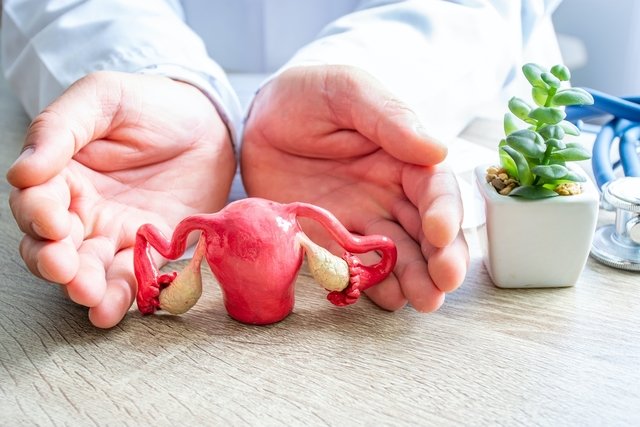Uterine transplantation involves removing the uterus from a living or brain-dead donor and implanting it into a woman who wishes to become pregnant but who does not have a uterus or who does not have a healthy uterus and is unable to maintain a pregnancy, for example. .
Furthermore, uterus transplantation has been studied for transsexual people, but it is not yet known whether even with a transplanted uterus, they could become pregnant due to anatomical, physiological, fertility and obstetric differences.
Uterine transplantation is a complex procedure, which can pose risks to the donor and recipient, such as bleeding during surgery or post-operative pain, in addition to rejection of the transplanted uterus. Despite this, around the world around 50 uterus transplants have been performed, 16 of which have resulted in successful pregnancies.

When is indicated
Uterine transplantation may be recommended by a doctor for women of reproductive age, from 20 to 40 years old, in cases such as:
- Malformations in the uterus that cannot be corrected through surgery;
- Infertilitydue to lack of uterusfor being born without a uterus;
- Having undergone surgery to remove the uterus due to diseases such as myoma, cervical cancer or chronic pelvic pain, for example;
- Presence of a uterus that does not function properlypreventing pregnancy.
Furthermore, to undergo a uterus transplant, women must be of a healthy weight, not smoke, and must not have other diseases such as diabetes, HIV infection or hepatitis B or C, for example.
See with Dr. Rodrigo Vianna when transplantation may be indicated:
Uterine transplantation in transgender people
Uterus transplantation in transsexuals has been studied to allow pregnancy and the birth of babies. However, this type of treatment has some anatomical and physiological limitations such as the shape of the male pelvis, which is narrower and has a smaller opening than the female pelvis, fixation of the uterus in the abdominal cavity, use of specific hormonal medications before transferring the embryo to the uterus and to maintain the pregnancy.
Furthermore, it is necessary to use immunosuppressive medications to prevent rejection of the uterus, which could lead to complications such as infections, for example, and the most effective dose for uterine transplantation is not yet known.
Uterine transplantation in transsexuals still requires further studies before it can be carried out, and is not yet fully recommended.
How is a uterus transplant performed?
Uterus transplant surgery has some steps that include:
- Initial assessment of health status of the recipient of the uterus, which allows checking whether she has any illness or complications that could jeopardize the transplant;
- Ovulation induction, with the use of hormones, which stimulate the production of follicles by the ovaries. Understand better how ovulation is induced and which hormones are used;
- Fertilization in vitroand freezing of embryos, to be implanted in the future after uterus transplantation;
- Surgery to remove a non-functioning uterus from the woman who will receive the donation of the uterus, keeping the ovaries and fallopian tubes, also called uterine tubes;
- Surgery to remove the donor’s healthy uterus live, which can be taken from a family member with the same blood type or donated by another compatible woman, or can be done by donating the uterus of a brain-dead woman;
- Healthy uterus transplant from the donor to the recipient, without connection to the ovaries. However, muscles, cartilage, tendons, arteries, veins and other blood vessels are connected to allow the new uterus to function;
- Use of immunosuppressive medications by the woman who received the transplant, to avoid rejection of the new uterus.
Uterine transplantation is temporary, meaning the uterus only remains long enough for 1 or 2 pregnancies. After this period, the uterus is removed through a surgery called hysterectomy. See how a hysterectomy is performed and what recovery is like.
The removal of the transplanted uterus is done to prevent the recipient from needing to take immunosuppressants for prolonged periods, avoiding the complications and side effects of this type of treatment.
Is it possible to get pregnant naturally after transplant?
A woman can become pregnant through fertilization in vitro, because natural pregnancy is impossible since the ovaries are not connected to the uterus. The recommendation is that, after a uterus transplant, you should wait at least 12 months to perform in vitro fertilization, as it allows you to know whether the uterus is not rejected by the body.
Doctors do not connect the new uterus to the ovaries because it would be very difficult to avoid scars that would make it difficult for the egg to travel through the fallopian tubes to the uterus, which could make pregnancy difficult or facilitate the development of an ectopic pregnancy, for example. .
How is a uterus donated?
Uterus donation can be made by a living or brain-dead donor, however, due to the difficulty of obtaining uteruses from deceased donors, uterus transplantation from a living donor is more common.
To donate the uterus, some procedures and criteria are evaluated, such as:
- Do not have illnesses that prevent donationsuch as high blood pressure, diabetes or high cholesterol, for example;
- Uterine health through tests that identify infertility, size and thickness of the uterus, presence of polyps, fibroids, endometriosis, HPV, adhesions or infections, in addition to the health of the blood vessels and arteries that nourish the uterus;
- Proven fertilityand candidates for donation cannot be in menopause;
- Not having had any surgery on the uterus previously;
- Compatible blood type with the woman who will receive the uterus;
- Immune system compatibility the donor and the recipient;
After all evaluation of the selected donor, surgery is performed to remove the uterus and cervix, and it is important that the donor remains in the ICU for several days to allow pain control and medical monitoring to prevent infections.
Risks of uterus transplant
Despite making pregnancy possible, uterine transplantation is very risky, as it can cause several complications for the mother or baby.
The risks of uterus transplant include:
- Loss of large volumes of blood, which may require blood transfusion;
- Formation of blood clots;
- Infection or rejection of the new uterus;
- Allergic reaction to anesthesia;
- Poor response to immunosuppressive medications;
- Increased risk of pre-eclampsia;
- Increased risk of miscarriage at any stage of pregnancy;
- Baby growth restriction;
- Premature birth.
Furthermore, the use of immunosuppressive medications, to prevent organ rejection, can cause other complications, which are not yet fully understood.
Bibliography
- BRANDSTROM, Mats; et al. Uterus Transplantation A Rapidly Expanding Field. Transplantation. 102. 4; 569-577, 2018
- EJZENBERG, Dani; et al. Uterine transplantation: a systematic review. Clinics. 71. 11; 1-5, 2016
- Practice Committee of the American Society for Reproductive Medicine. American Society for Reproductive Medicine position statement on uterus transplantation: a committee opinion. American Society for Reproductive Medicine. 110. 4; 605-610, 2018
- FACULTY OF MEDICINE AND HEALTH SCIENCES – STEINBERG CENTRE FOR SIMULATION AND INTERACTIVE LEARNING. Fertility Frontier: Can Transgender Women Get Uterus Transplants?. 2021. Disponível em: <https://www.mcgill.ca/medsimcentre/channels/news/fertility-frontier-can-transgender-women-get-uterus-transplants-329760>. Acesso em 31 ago 2021
- FEDERAL COUNCIL OF MEDICINE. CFM Resolution No. 2168 OF 09/21/2017 – Ethical standards for the use of assisted reproduction techniques. 2017. Available at: <https://www.legisweb.com.br/legislacao/?id=352362>. Accessed on Aug 31, 2021
- JONES, BP; et al. Uterine transplantation in transgender women. BJOG. 126. 2; 152–156, 2019
- LERNER, THEO; et al. What are the Possibilities of Uterine Transplantation in Transgender Patients?. Brazilian Journal of Gynecology and Obstetrics. 39. 10; 2017
- FEBRASGO – BRAZILIAN FEDERATION OF GYNECOLOGY AND OBSTETRICS. Uterine Transplant. Available at: <https://www.febrasgo.org.br/images/comissoes/TRANSPLANTE_UTERINO_-_revisado.pdf>. Accessed on Aug 30, 2021
- BRANNSTROM, M.; et al. Uterus Transplantation: A Rapidly Expanding Field. Transplantation. 102. 4; 569-577, 2018
- JONES, BP; et al. Human uterine transplantation: a review of outcomes from the first 45 cases. BJOG. 126. 11; 1310-1319, 2019
- GOMEL, V. Uterine transplantation. Climacteric. 22. 2; 117-121, 2019

Sign up for our newsletter and stay up to date with exclusive news
that can transform your routine!
Warning: Undefined array key "title" in /home/storelat/public_html/wp-content/plugins/link-whisper-premium/templates/frontend/related-posts.php on line 12
Warning: Undefined array key "title_tag" in /home/storelat/public_html/wp-content/plugins/link-whisper-premium/templates/frontend/related-posts.php on line 13



